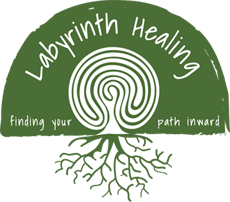Are you in a codependent relationship? Avoidant attachment meets anxious attachment.
Posted by on in Attachment, Blog, Codependency | 0 comments
Are you in a codependent relationship?
Codependency is a pattern of problematic behavior in interpersonal relationships. Here are some of the common features or situations you’ll see in codependent relationships.
The codependency behaviors listed below are better understood as anxious attachment or people-pleasing behaviors, which I’ve written more about here.
The other attachment style commonly paired with anxious attachment is avoidant attachment.
This post doesn’t describe those behaviors, but you can learn a bit more about that here.
So, here are some common examples of codependency in relationships– specifically, what people-pleasing looks like in relationships and why being “too nice” can really drive people nuts.
Common signs of codependent relationships
+ alternating patterns of overaccommodation in relationships “Sure, I’d be happy to!” followed by stretches of seething resentment, passive aggressive displays of anger, or sudden break ups
+ a tendency at the beginning of the relationship to see the best in someone (aka, idealizing), overlooking red flags or warning signs about boundary violations that crop up in the relationship
+ strong inclination to “overfunction” in relationships by taking care of others (aka, compulsive caregiving, martyrdom, “enabling” behavior)
+ vulnerability to burnout, physical complaints, and other stress-related illnesses
+ chronic overbooking and overextension due to inability to say no
+ “helpful” behaviors in a relationship that are actually efforts to control the other person or achieve a particular outcome
+ losing yourself in a relationship—prior interests, hobbies, friendships don’t survive a new relationship; you disappear inside your partner’s interests, friendships, and life
+ staying in a relationship well past its prime, even in cases of physical or emotional abuse or neglect
+ jealousy and possessive behaviors masked by seemingly helpful or evening enabling behaviors to try and keep the other person around or obtain control
+ frequently checking in with your partner’s mental state with questions like, “Are you ok?” and “Are you mad at me?”
Does this sound familiar?
If this sounds familiar, take heart. It’s possible to change, even if you’ve been operating this way in relationships for decades.
Codependency is a strategy for dealing with relationships that are unpredictable and volatile.
When you can understand the origins and the helpfulness of codependent behavior as a survival strategy for trying to maintain relationships and a sense of safety, you can have more compassion for yourself! And that self-compassion piece is important– without it, it’s much harder to make lasting changes.
Learn more here about codependency and how to get codependency therapy in Austin. If you’re looking for a counselor offering in codependency therapy and people-pleasing counseling in Austin, you’re in the right spot. Reach out to see about scheduling a free consultation here.



